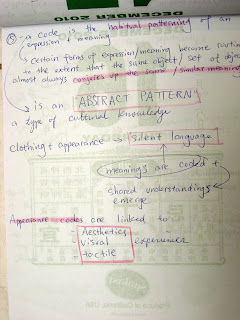I started using 11x17 paper, since this is going deep into tangible products. I feel that I keep losing myself when I design products for the concept. Therefore, I wrote my message and demographics down on every sheet to remind myself my goal, audience and purpose.
Just to tell you my demographic again, that is to change the Han ethnicity who is now only defined by language and writting to become an ethnicity like others who can also be instantly recognized by their clothing.
My theme for this concept is that, the revive of the Han clothing is not simply the revive of that piece of clothe, but also thousands years of culture and ettiquette behind. Therefore, I decide to take the theory from the Social Psychology book saying that cultural values tend to be perpetuated when they are being presented on an unconscious level. Also there is a kind of perception known as the participant in which the perciever is involed in making things mean. As a result, I decided to have the reader to have personal experience of the living of ancient China, in which he is involved in the living style with the main character.
I had this timeline a long time ago, but had it more refined in layout this time.
A person with half split clothing on fits the role of misunderstanding of the two ethnicities as one.

























































